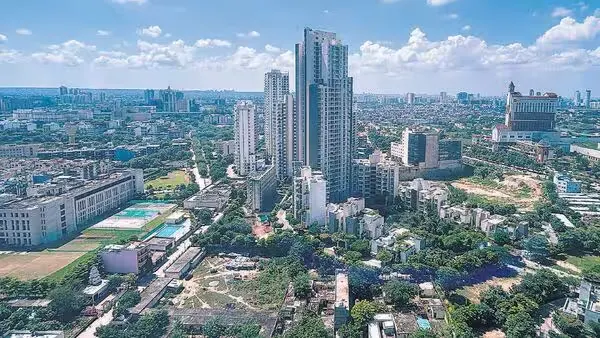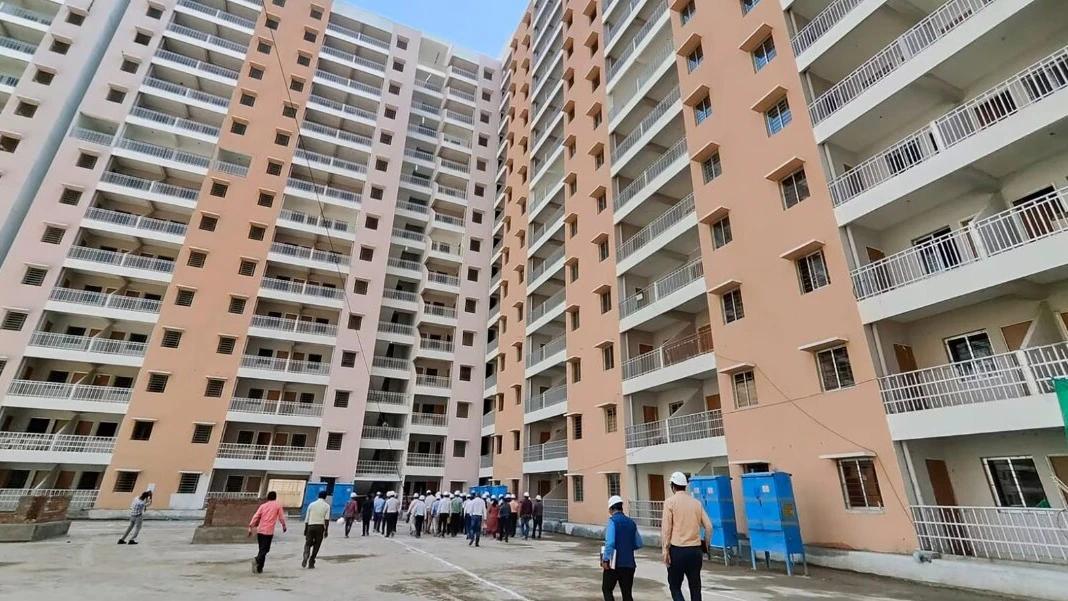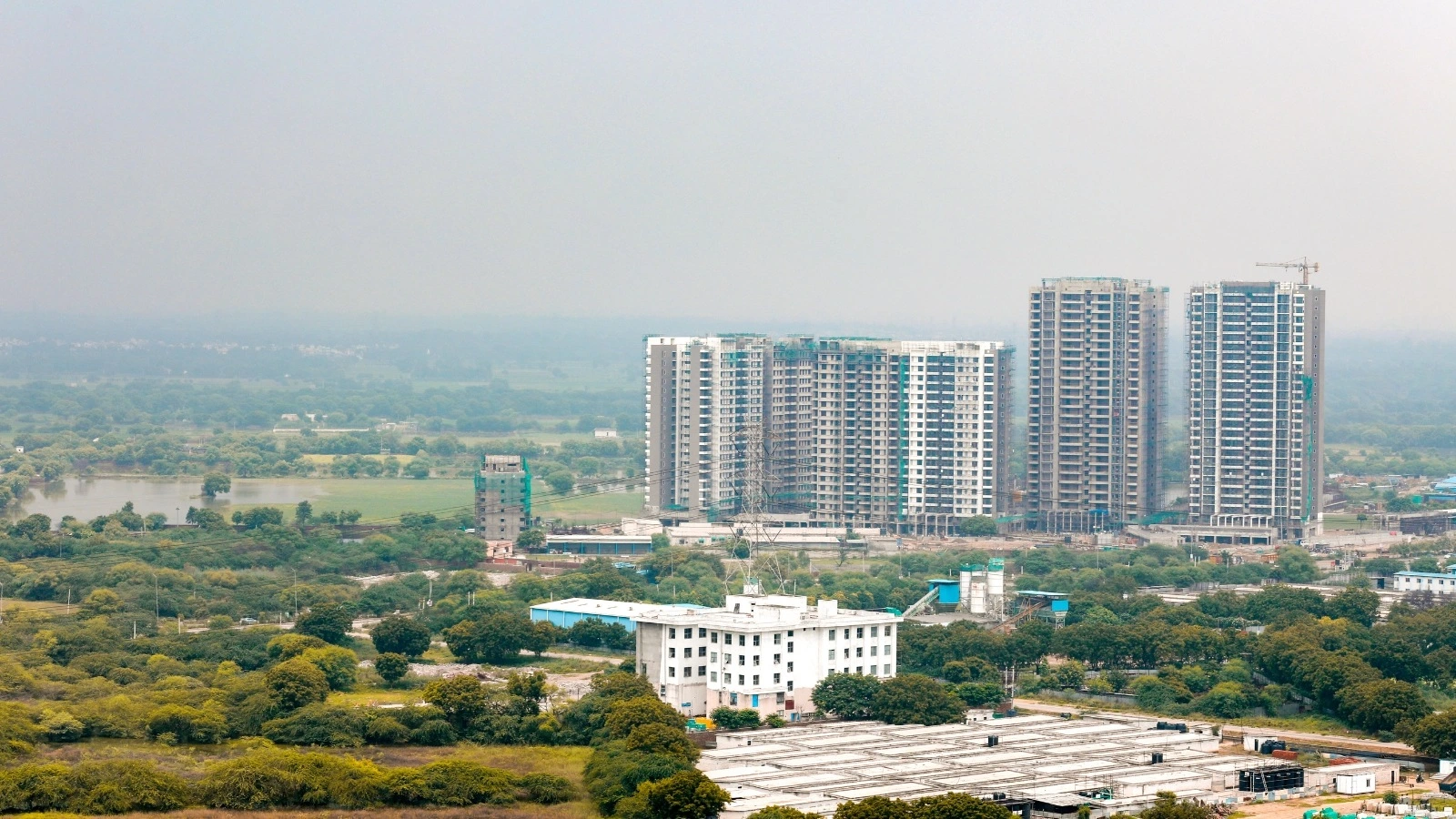Table of Content
- Growth Forecast: A Decades-Long Upswing in Housing Prices and Sales
- Key Drivers Behind the Housing Boom
- Market Segments: From Affordable to Luxury Housing
- Tier II and III Cities Emerge as Growth Engines
- Long-Term Outlook: A $5–10 Trillion Real Estate Market by 2047
- Industry Insights: Expert Opinions on the Future of Housing Prices
- Conclusion
India’s housing market is on the brink of a long-term expansion phase, with housing prices projected to rise steadily by 5–10% annually and home sales expected to double by 2047, according to a joint report by CII and Colliers India.
The report, “Real Estate @2047: Building India’s Future Growth Corridors,” outlines how a combination of economic resilience, demographic momentum, and infrastructure upgrades will reshape the country’s residential real estate landscape. This transformation is expected to turn India’s property sector into a $5–10 trillion market by 2047, contributing up to 20% of the nation’s GDP.
Growth Forecast: A Decades-Long Upswing in Housing Prices and Sales
The report predicts that annual housing sales could rise from the current 3–4 lakh units to 5 lakh units by 2030 and further double to 10 lakh units by 2047. This growth trajectory will be supported by rising household incomes, urban migration, and increasing aspirations for homeownership.
Meanwhile, housing prices are expected to witness a sustained 5–10% annual appreciation over the next several years. This growth, unlike speculative booms of the past, is rooted in genuine demand, steady income growth, and improved affordability due to easier financing options and government incentives.
Also Read: Maharashtra Moves to Merge All MMR Metro Lines Under Single Authority
Key Drivers Behind the Housing Boom
India’s real estate resurgence is underpinned by four major growth drivers:
- Rising Household Incomes: With the country’s per capita income on a steady rise, middle-income and dual-earning families now have greater purchasing power to invest in homes.
- Demographic Advantage: India’s working-age population is entering its prime earning years. As the median age moves toward 35, the demand from first-time homebuyers is expected to surge.
- Policy Support: Government initiatives like the Pradhan Mantri Awas Yojana (PMAY), RERA, and the SWAMIH Fund have improved transparency, strengthened accountability, and reduced project delays.
- Infrastructure Growth: Massive infrastructure projects expressways, metros, airports, and industrial corridors are expanding India’s urban boundaries and opening new housing corridors.
Together, these factors create a stable base for long-term growth in both housing sales and housing prices.
Market Segments: From Affordable to Luxury Housing
The report suggests that the next phase of India’s housing cycle will be diverse. While affordable and mid-segment homes will continue to attract first-time buyers, luxury and ultra-luxury homes will gain traction among high-net-worth individuals (HNIs) and NRIs.
Developers are also shifting towards plotted developments, villas, and wellness-oriented living as homebuyers increasingly prioritize space, health, and lifestyle amenities. This evolving mix of consumer demand will further support price growth across segments and stabilize the long-term market for housing prices.
Tier II and III Cities Emerge as Growth Engines
The growth story is not limited to metros. Tier II and III cities such as Lucknow, Coimbatore, Indore, Surat, and Nagpur are emerging as key real estate hubs due to industrialization, better infrastructure, and lower land costs.
These cities are also attracting remote professionals and new-age entrepreneurs seeking affordability and quality of life. With improved connectivity and proactive state housing policies, housing prices in these emerging markets are likely to appreciate at a faster pace than traditional metros.
Additionally, redevelopment projects and revised zoning norms in major metros like Mumbai, Bengaluru, and Delhi NCR are expected to bridge the demand-supply gap, creating new investment opportunities for both developers and end-users.
Long-Term Outlook: A $5–10 Trillion Real Estate Market by 2047
According to the CII–Colliers report, India’s real estate sector currently valued at approximately $0.3 trillion could expand twentyfold to reach between $5 and $10 trillion by 2047.
This exponential growth aligns with India’s broader vision of becoming a developed economy by its 100th year of independence. By 2047, real estate could contribute 14–20% of the country’s GDP, driven by robust housing prices, steady residential demand, and diversification into new asset classes like data centers, logistics hubs, and co-living spaces.
The report also highlights that rapid urbanization could lead to nearly 100 Indian cities having populations exceeding one million by 2047, reinforcing housing demand across all price brackets.
Also Read: MoFA vs RERA: Why Maharashtra Government Is Considering Repealing MoFA
Industry Insights: Expert Opinions on the Future of Housing Prices
Government Viewpoint: Officials from the Ministry of Road Transport and Highways noted that ongoing infrastructure expansion including expressways and industrial corridors will play a pivotal role in shaping India’s future housing map.
Developers’ Perspective: Leading developers such as Signature Global’s Pradeep Aggarwal emphasized that policy measures like RERA and PMAY have boosted buyer confidence, streamlined approvals, and stabilized housing prices.
Consultants’ Take: Colliers India CEO Badal Yagnik remarked that India’s real estate growth will not only scale up traditional housing but also drive innovation in alternative segments like co-living, data centers, and green commercial spaces.
Conclusion
The steady rise in housing prices and the doubling of housing sales projected by 2047 reflect more than market momentum they signify structural transformation. India’s housing sector is now guided by stronger regulation, enhanced transparency, and technology-driven innovation.
As urbanization accelerates and infrastructure continues to expand, the housing market is expected to remain resilient, offering long-term opportunities for both homebuyers and investors.
With robust demand, disciplined supply, and visionary policies, India is well-positioned to transform its real estate sector into a $10 trillion powerhouse one that mirrors the nation’s journey towards a developed, “Viksit Bharat.”








_1766133697.webp)
Ans 1. According to the CII–Colliers report, housing prices in India are expected to grow by 5–10% annually, supported by steady demand, income growth, and infrastructure expansion.
Ans 2. Yes. Annual housing sales are projected to rise from the current 3–4 lakh units to 10 lakh units by 2047, driven by affordability, urban migration, and policy support.
Ans 3. Key growth drivers include rising household incomes, demographic advantage, improved infrastructure, and government initiatives like PMAY, RERA, and SWAMIH Fund.
Ans 4. While affordable and mid-segment housing will dominate demand, luxury and plotted developments are expected to see rising traction among NRIs and HNIs.
Ans 5. Yes. Cities like Lucknow, Coimbatore, Surat, and Nagpur are emerging as strong housing markets due to industrial growth, infrastructure, and lower land costs.
Ans 6. India’s property sector could reach $5–10 trillion by 2047, contributing up to 20% of GDP, according to the CII–Colliers report.
Ans 7. Expanding expressways, metros, airports, and industrial corridors will enhance connectivity and boost housing demand and prices across major and emerging cities.
Ans 8. Policies like RERA, PMAY, and redevelopment reforms have increased transparency, reduced delays, and improved buyer confidence, leading to stable price appreciation.
Ans 9. India’s housing market is among the fastest-growing worldwide, projected to expand 20 times by 2047, aligning with the country’s goal of becoming a developed economy.
Ans 10. Yes. The coming decade marks the start of a long-term upcycle, making it an ideal window for homebuyers and investors to enter before housing prices climb further.